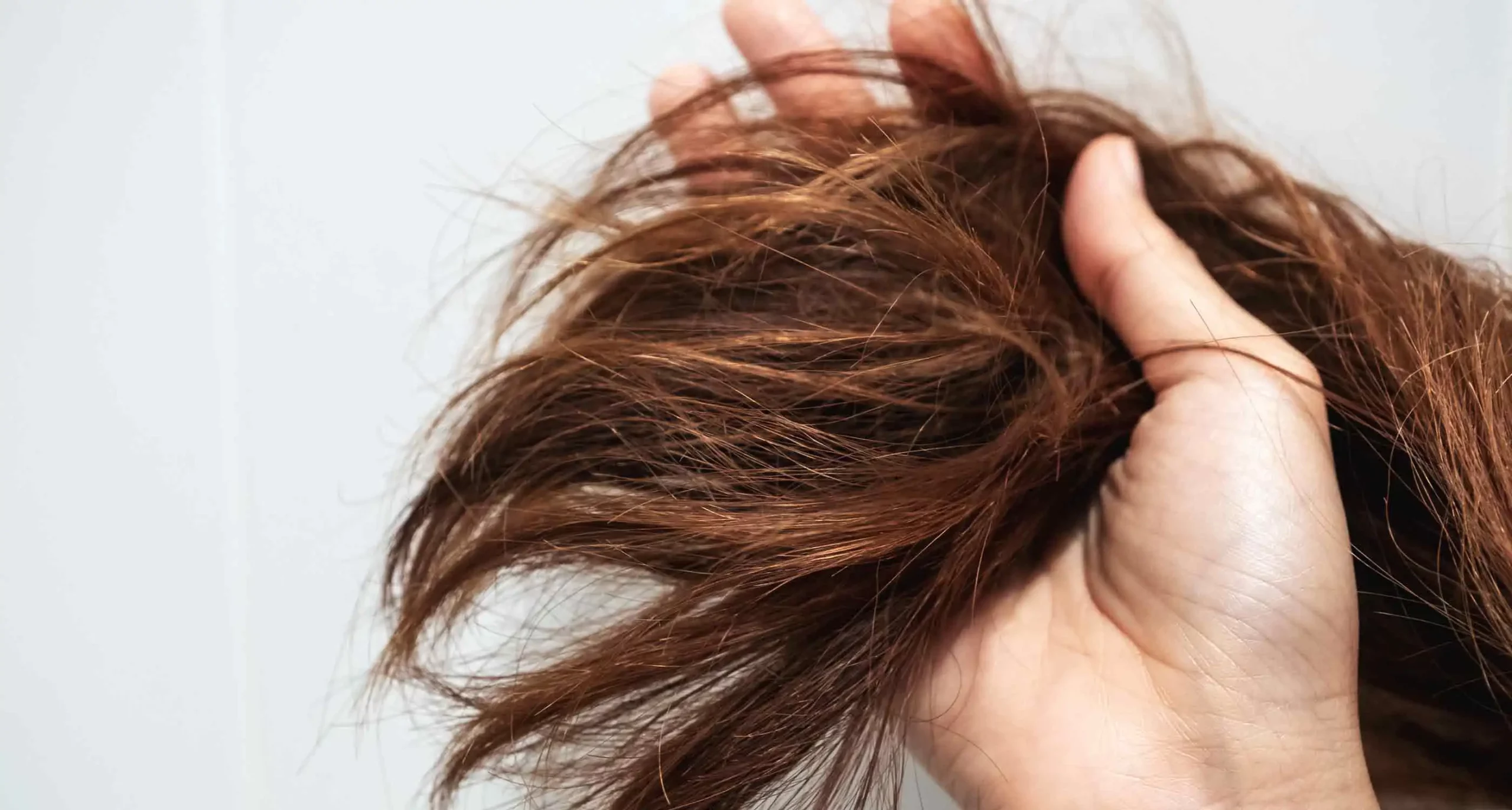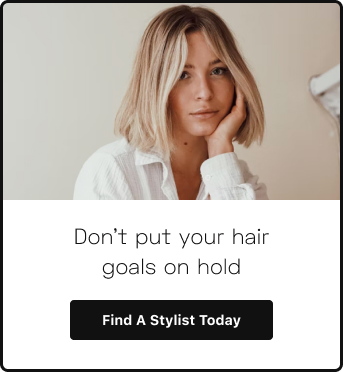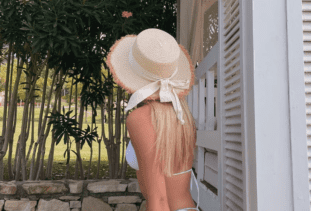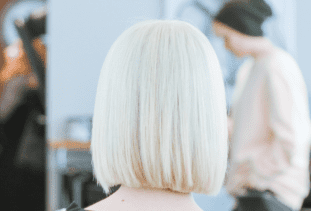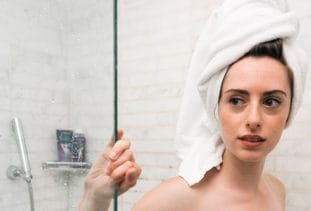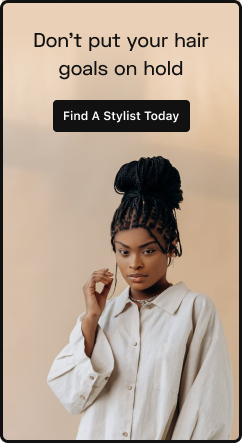Are frizzy hair and flyaways making you reach for a hat yet again? Judging from the thousands of hair care products promising silky, smooth locks, you’re not alone. But what’s causing your hair to fluff and fuzz, and how can you get rid of frizzy hair once and for all?
Not all hair types are the same, and the solution to moisture-parched hair will vary based on your hair texture, styling routine, age, and the products you use. Whether you’re a curly girl working against humidity or a lifelong straightener ready to embrace their natural texture, here are our top frizz-fighting tips for every hair type.
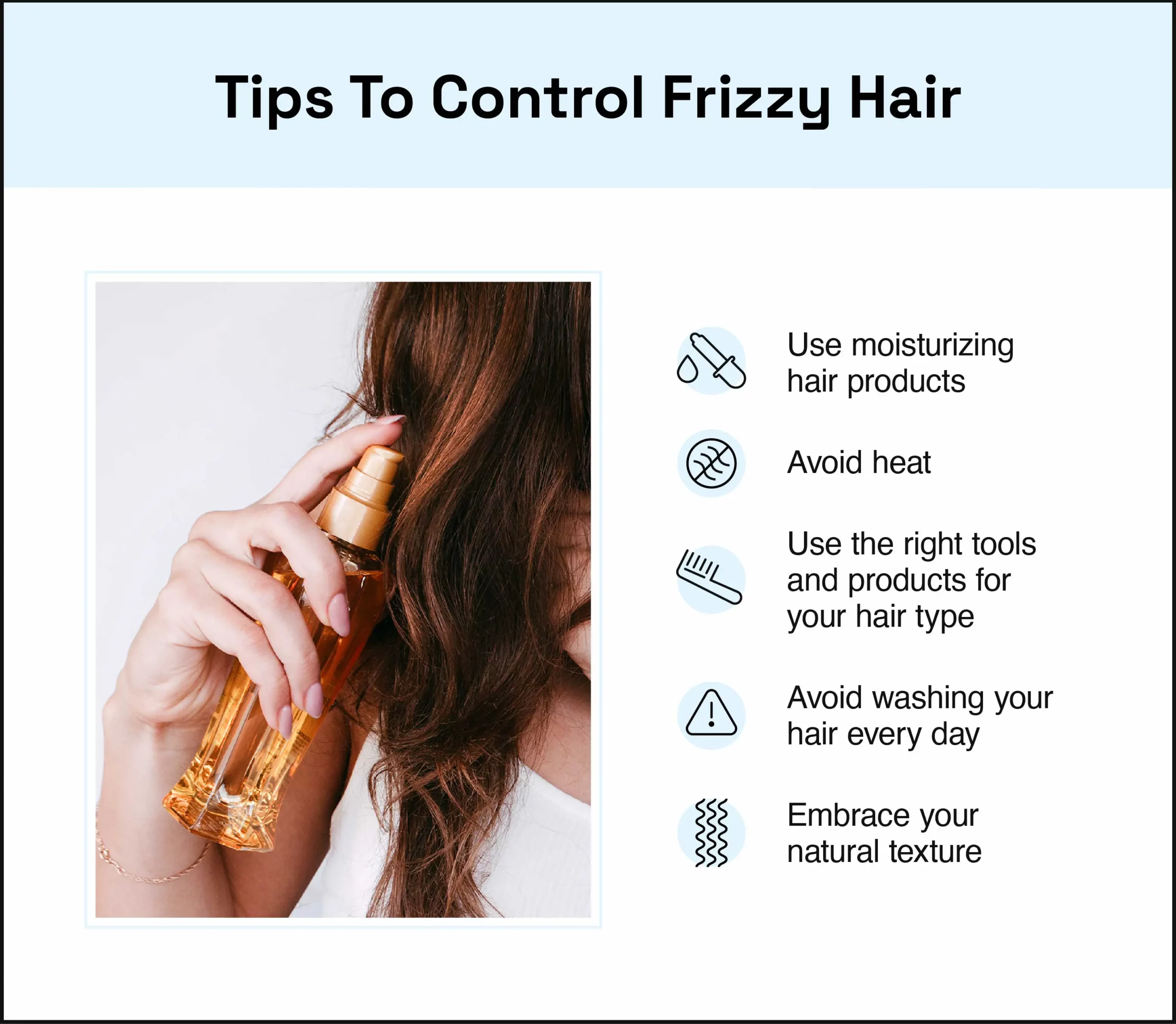
1. Rinse your hair with cool water
A long, hot shower may feel like a treat, but excessive heat can strip the hair of the natural oils it needs to seal moisture into your hair shaft, leading to breakage and frizz. Help keep your hair hydrated by only rinsing with cool water. If you don’t want to sacrifice your hot showers, tie your hair up and out of your face while you wash.
2. Try a hydrating clarifying shampoo
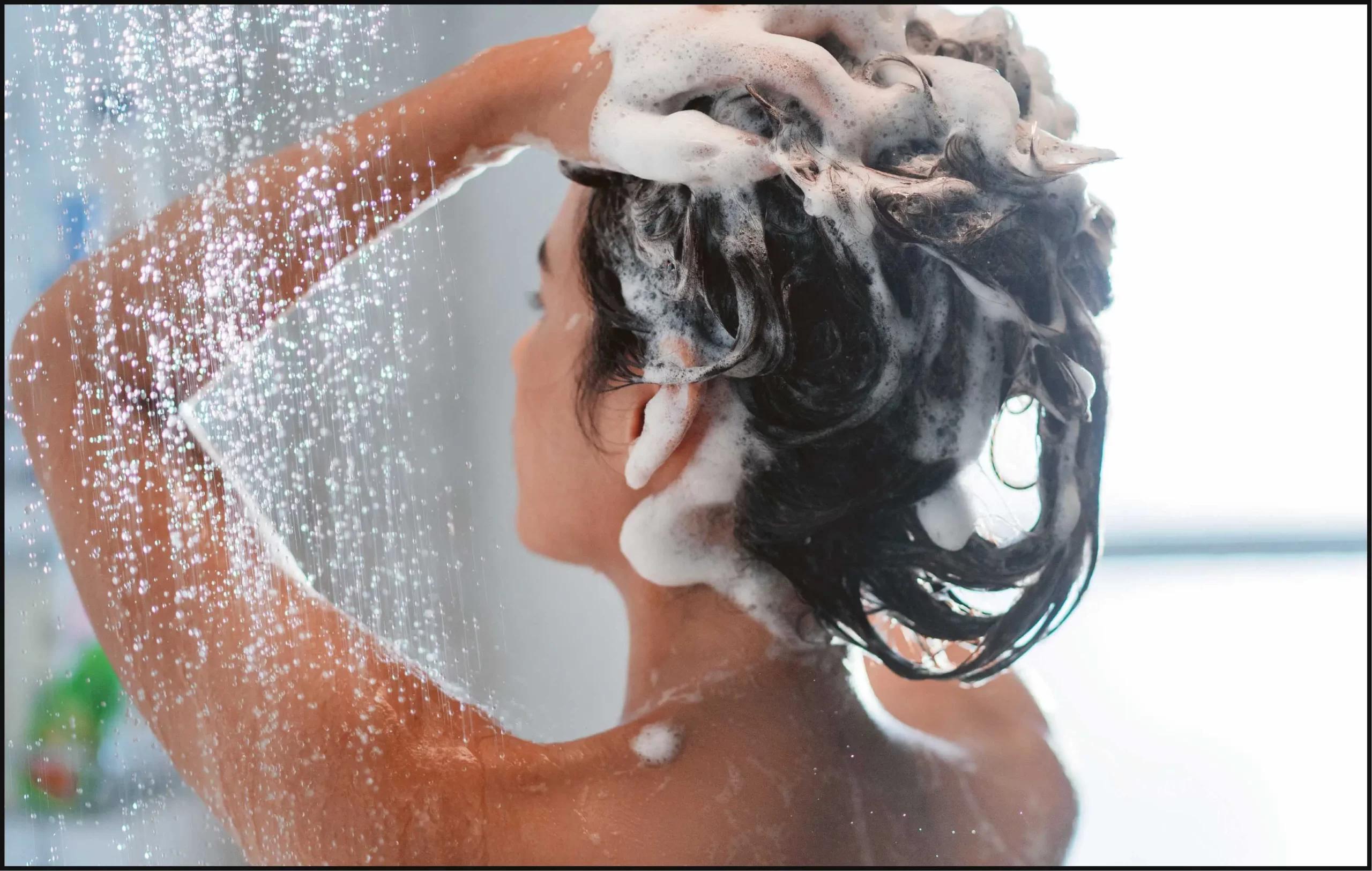
If your hair looks oily, limp, and lifeless, consider supplementing your routine with a clarifying shampoo. A clarifying shampoo cuts through oil, dirt, and product buildup regular shampoos can’t get to, deep-cleaning your scalp and leaving strands squeaky clean.
Since these shampoos often contain sulfates that can dry out your hair, look for ones with moisturizing ingredients like shea butter or coconut oil and limit use to once a week.
3. And a pre-cleanse detangler for the curlies
Thick, curly hair can be a challenge to brush — and can often lead to frizz and split ends if not treated properly. Nourish your natural texture with a lightweight pre-cleanse detangler for some much-needed slip and shine.
4. Opt for a moisturizing daily shampoo
Frizzy hair is often the result of moisture-parched strands, and harsh shampoos can dry out your hair even more. When choosing a shampoo and conditioner, opt for a moisture-based formula with ingredients like:
- Anti-humectants such as glycerin and panthenol
- Hydrating ingredients like vitamin E, cocoa butter, honey, or shea butter
- Moisturizing oils including argan oil, coconut oil, and olive oil
Avoid shampoos or conditioners that contain:
- Sulfates (unless you’re looking for a clarifying shampoo to use once a week)
- Silicones
- Parabens
- Formaldehyde
5. Use a detangling brush in the shower
Even though hair is more fragile when it’s wet, moisture is essential when detangling curls. Melt through knots with a proper detangling brush for your unique hair texture. While letting your conditioner set in the shower, use a detangling brush to smooth your natural curls without unnecessary shedding and damage.
6. Dry your hair with a microfiber towel
Regular terry cloth towels may be contributing to your unruly hair, especially if you rub your scalp dry after a shower. This material creates friction that can rough up your hair cuticle.
Instead, gently dry your hair by bunching and squeezing from the bottom with a microfiber towel or cotton T-shirt. If you’re rocking natural curls, you can try “plopping” with a large T-shirt to increase definition and cut down on frizz.
7. Skip the blow-dryer and let your hair air dry
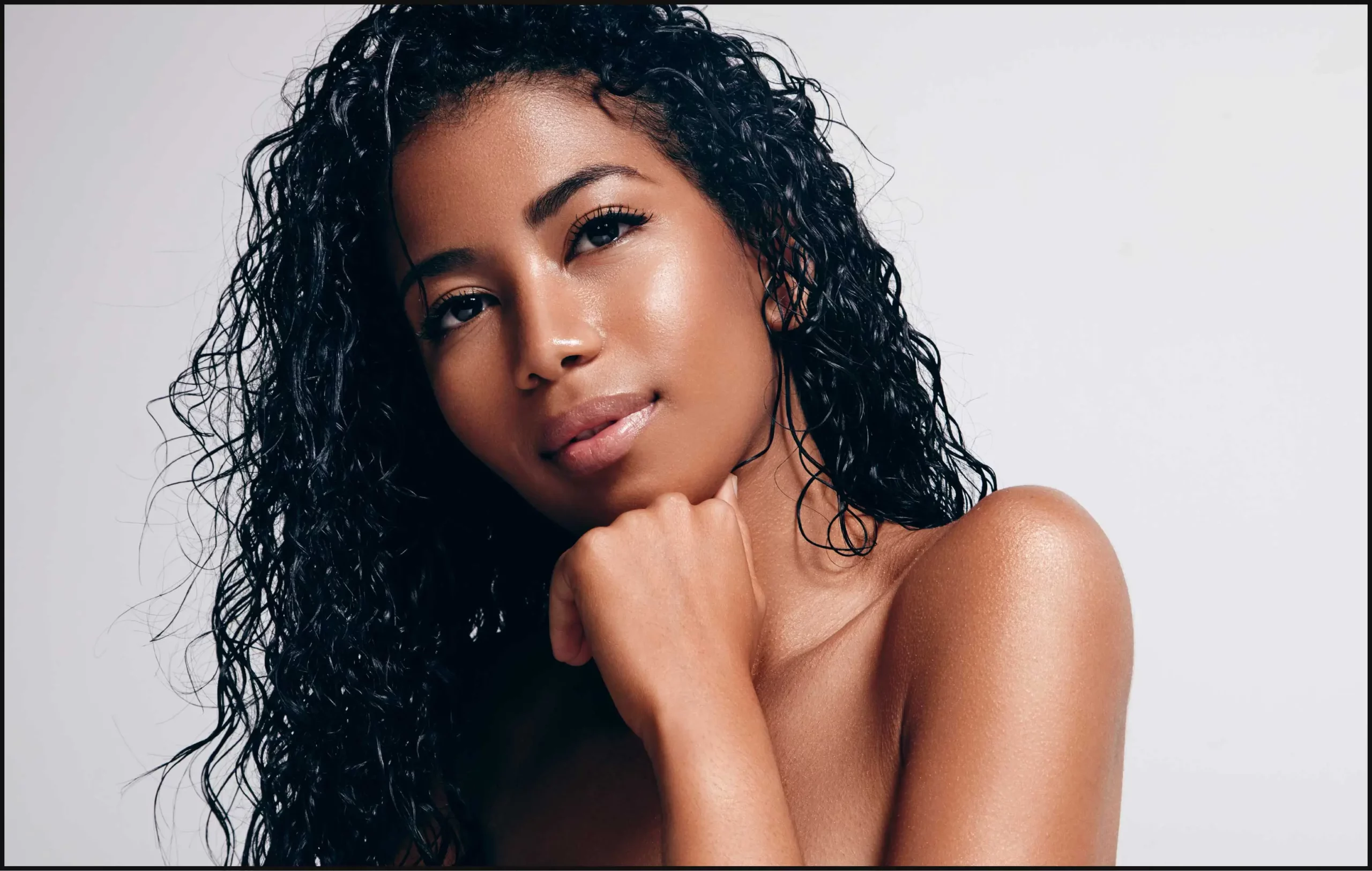
Heat damage is the number one cause of frizz — if you’re constantly blow-drying and styling hair, it may be time to embrace a more natural approach. Whenever possible, give your hair a much-deserved break from the heat and let it air dry.
If you must blow-dry, let your hair air dry the majority of the way and use a heat-protecting spray to limit the damage. While blow-drying, keep the temperature low and finish off the look with a cool blast.
8. Add a leave-in conditioner to your routine
Fight the frizz 24/7 with a hydrating leave-in conditioner. This product helps lock in moisture and protect your hair from UV damage, humidity, and other harmful environmental elements that could cause your hair to poof.
9. Apply product to wet (not damp) hair
People with curly hair know silky tresses aren’t only the result of what product you use, but when you use them. Applying your hair serums to damp or dry hair will cause your products to saturate unevenly, leaving you with frizzy hair and lifeless curls.
Instead, apply your products to dripping-wet hair, squeezing out the excess and running it back through a few times to ensure every strand is evenly coated. Once you’ve applied your serum, you can gently towel dry or plop your hair.
10. Detangle with a wide-tooth comb
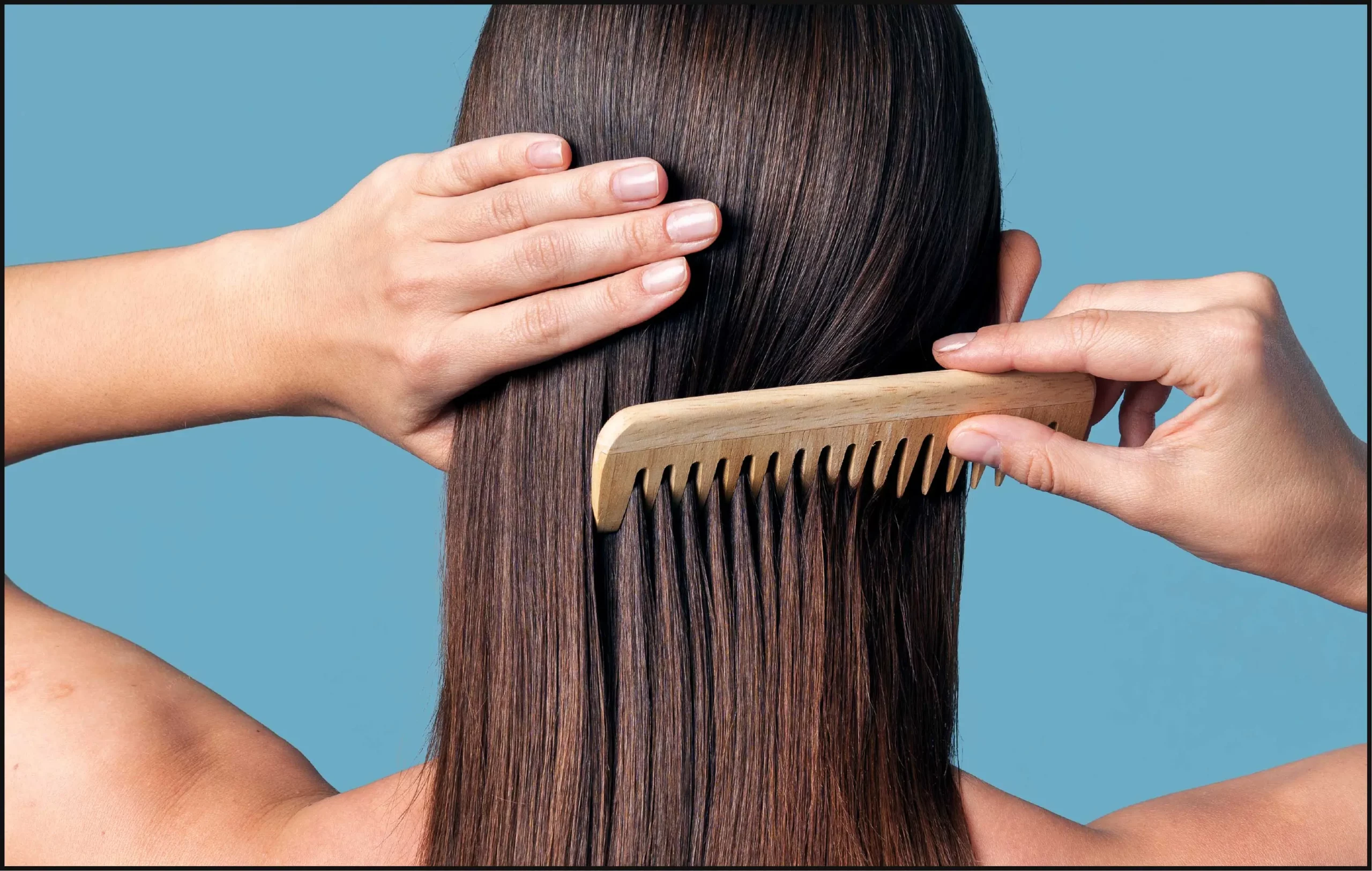
A wide-tooth comb is an essential detangling tool for those with naturally wavy, straight, or long hair. Compared to a regular hairbrush or cob, wide-tooth combs easily bust through knots without causing unnecessary shedding, breakage, or split ends.
11. Follow up with a reparative hair serum
Hair serums have both protective and reparative properties needed to maintain silky smooth locks. Whether you’re struggling with thick or thin frizzy hair, a silicone-based hair serum will help seal in moisture and keep your hair hydrated.
Wondering how to get rid of frizzy hair without weighing it down? If serums or oils leave your hair feeling heavy and greasy, look for a formula with a lighter silicone like cyclomethicone. A serum containing hydrolyzed proteins can also help remove static from the hair that causes frizz and flyaways.
12. Treat your frizzy hair with a nourishing hair mask
Applying a deep-conditioning hair mask once a week can help lock in moisture, boost natural oil production, and promote a healthy scalp — all essential for getting rid of frizzy hair naturally.
When choosing a hair mask for dry hair, look for formulas infused with hydrating ingredients like:
- Moisturizing oils, including avocado, coconut, jojoba, or almond oil
- Shea butter
- Keratin protein
- Hyaluronic acid
13. Invest in a high-quality brush for your hair texture
Sometimes your hair woes have more to do with the tools you’re using than your actual hair. Using the wrong type of brush for your hair texture can cause breakage, hair fall, and yes, frizz. The right brush for someone with thick, curly hair may cause more harm than good for someone with fine, long hair.
Not sure what type of hair brush is right for you? Here’s a quick guide to help you decide:
- Detangler brush: good for all hair types
- Wet detangler brush: best for very textured or curly hair
- Cushion brush: best for removing dandruff or product buildup
- Thermal brush: used to conduct heat and speed up blow-drying
- Nylon bristle brush: best for detangling dry, static-prone hair
- Boar bristle brush: best for thick, curly hair
- Paddle brush: best for long, straight hair
14. Style your hair with an ionic hair dryer or heat-free curlers
If traditional dryers leave your hair looking lackluster and frizzy, it may be time to invest in the latest hair tool tech — ionic hair dryers. Unlike standard hair dryers that rely on damaging heat to style your hair, ionic hair dryers shoot negative ions to displace water’s positive ions. This makes them more effective at busting up water droplets without letting them soak into your hair shaft and causing frizz. Science.
It’s important to note that ionic hair dryers are best for sleek styles since they can actually remove volume and texture from the hair. If you’re going for a fuller ‘do, opt for non-ionic.
15. Get bouncy smooth curls with a diffuser
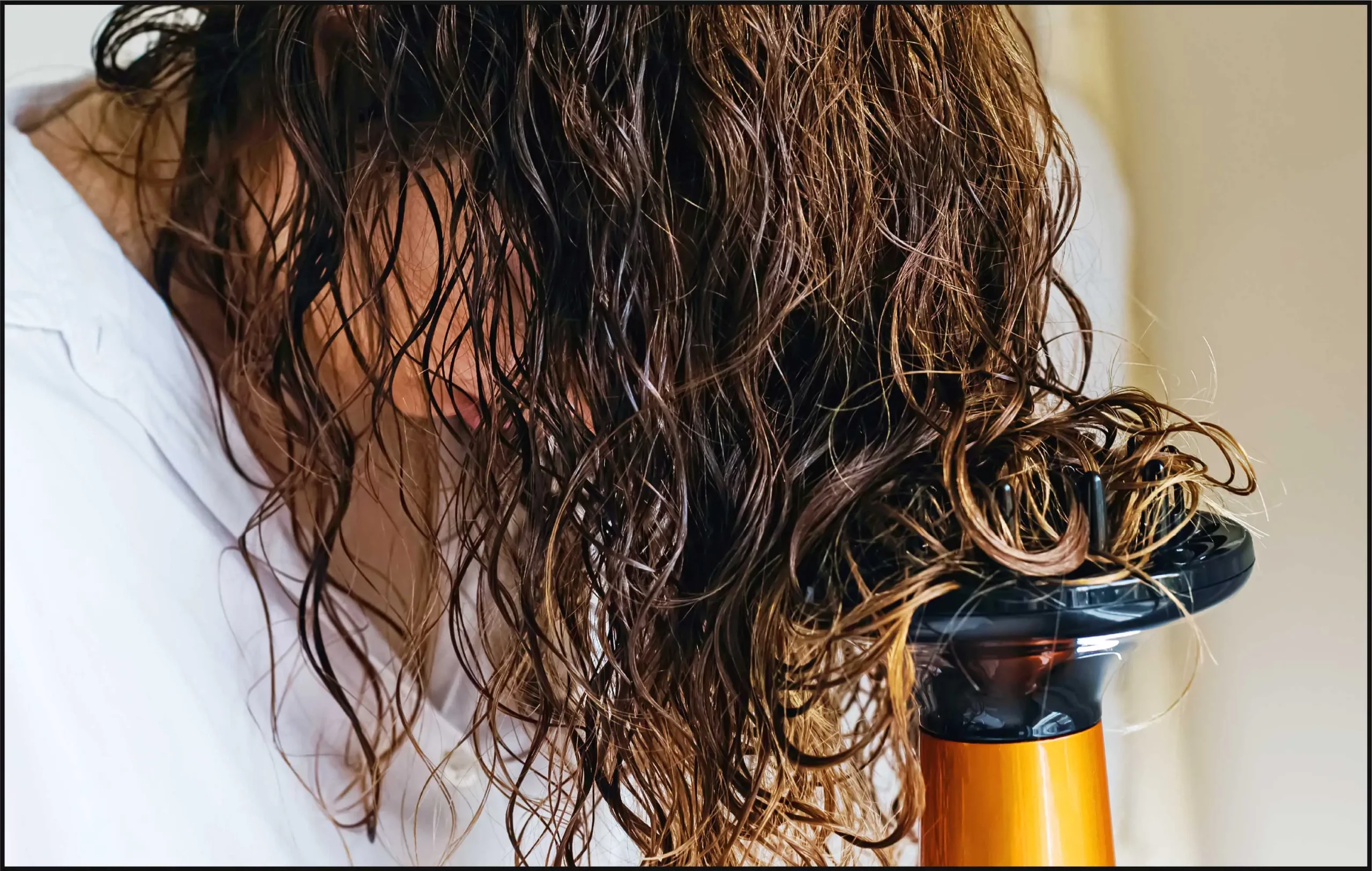
A diffuser is a round, plastic hair dryer attachment that evenly distributes the air stream across a wider area when blow-drying your hair. For curly or wavy girls, this helps maintain your natural hair pattern without blowing curls out of shape and into a fuzz.
16. Tame frizz and flyaways with hairspray
When you think of hairspray, you might imagine stiff, gunky curls or intentionally teased styles, but the right amount of spray can actually work miracles for frizz. If you struggle with flyways, lightly mist your brush with hairspray before brushing to keep frizz away all day. In this case, a little product goes a long way.
17. Set unruly curls with hair gel
If you want to lean into your natural curls or coils, the right products make all the difference — and hair gel is one of them. Hair gel will enhance your hair texture, add shine, and keep your curls locked in place even in humid environments. If you’re wearing your curls daily, a soft or medium hold gel will be enough to maintain your style without weighing down your locks.
18. Ditch the high ponytail
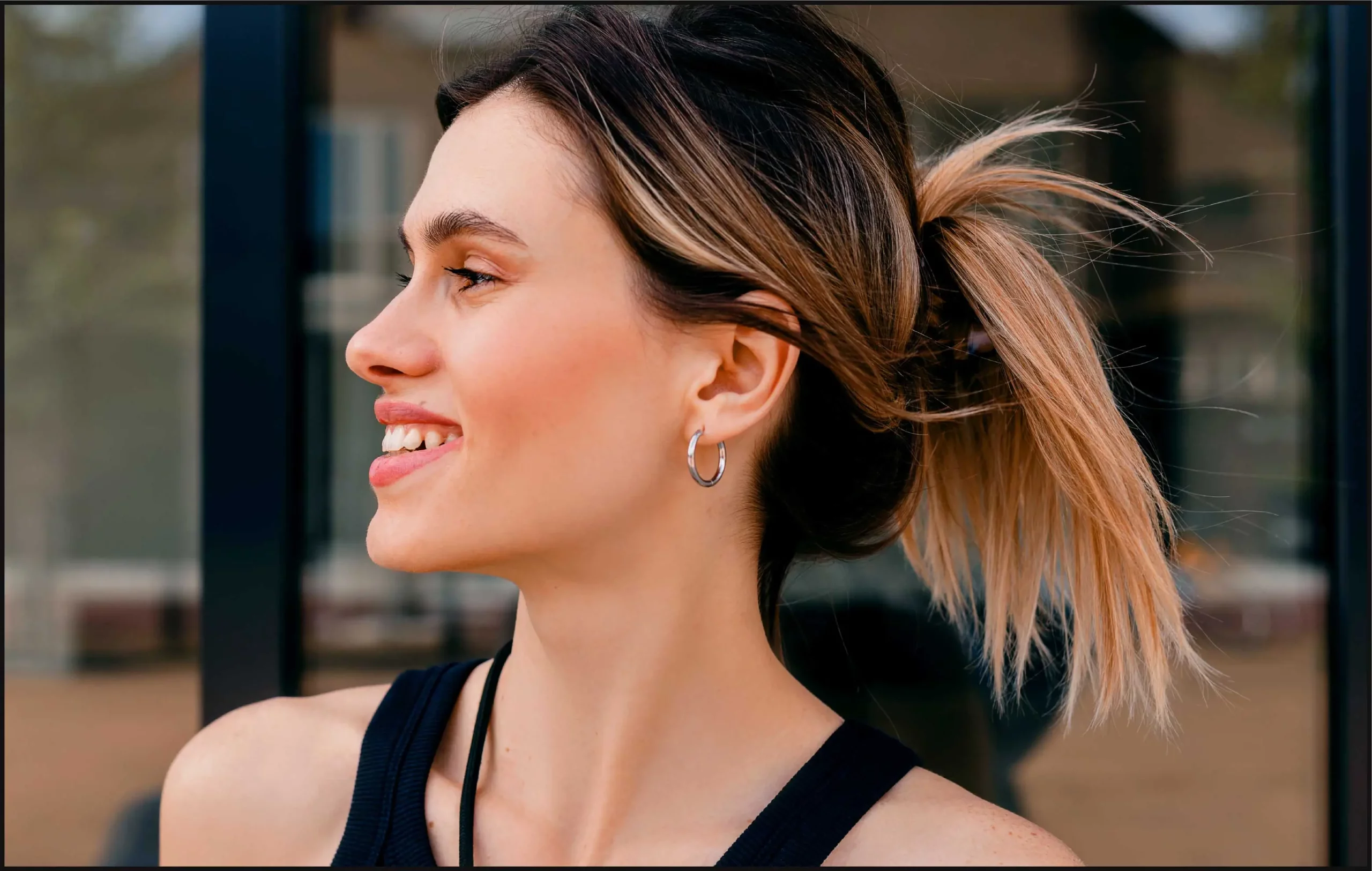
It might be tempting to put your hair up during a particularly bad hair day, but tight styles like high ponytails or buns may be making your frizz worse. Tight styles may cause hair to break and frizz, especially where it comes in contact with the hair tie.
If you need to keep your hair out of your face at the gym or simply want to rock a sleek pony, opt for less damaging hair ties like a fabric hair tie or silk scrunchie, or choose a trendy claw clip instead.
19. Avoid washing your hair every day
One of the best things you can do for your hair is limit how often you wash it. Even with the highest-quality shampoos, washing your hair daily will strip it of its natural oils and leave your hair looking frizzy and dry.
Limit your wash days to two to three times a week, and use a dry shampoo or curl resetting spray between washes to keep your hair looking voluminous and clean.
20. Schedule regular trims
If frizz is focused toward the ends of your hair, split ends are likely the cause. Unfortunately, you can’t repair hair once it’s split, but you can prevent split ends by keeping your hair healthy and trimmed.
Professional hairstylists recommend scheduling a trim every six to eight weeks to avoid frizz-inducing split ends. Additionally, regular trims will promote healthy hair growth and lessen the need for extensive moisturizing treatments in the long term.
21. Sleep with a silk pillowcase and bonnet
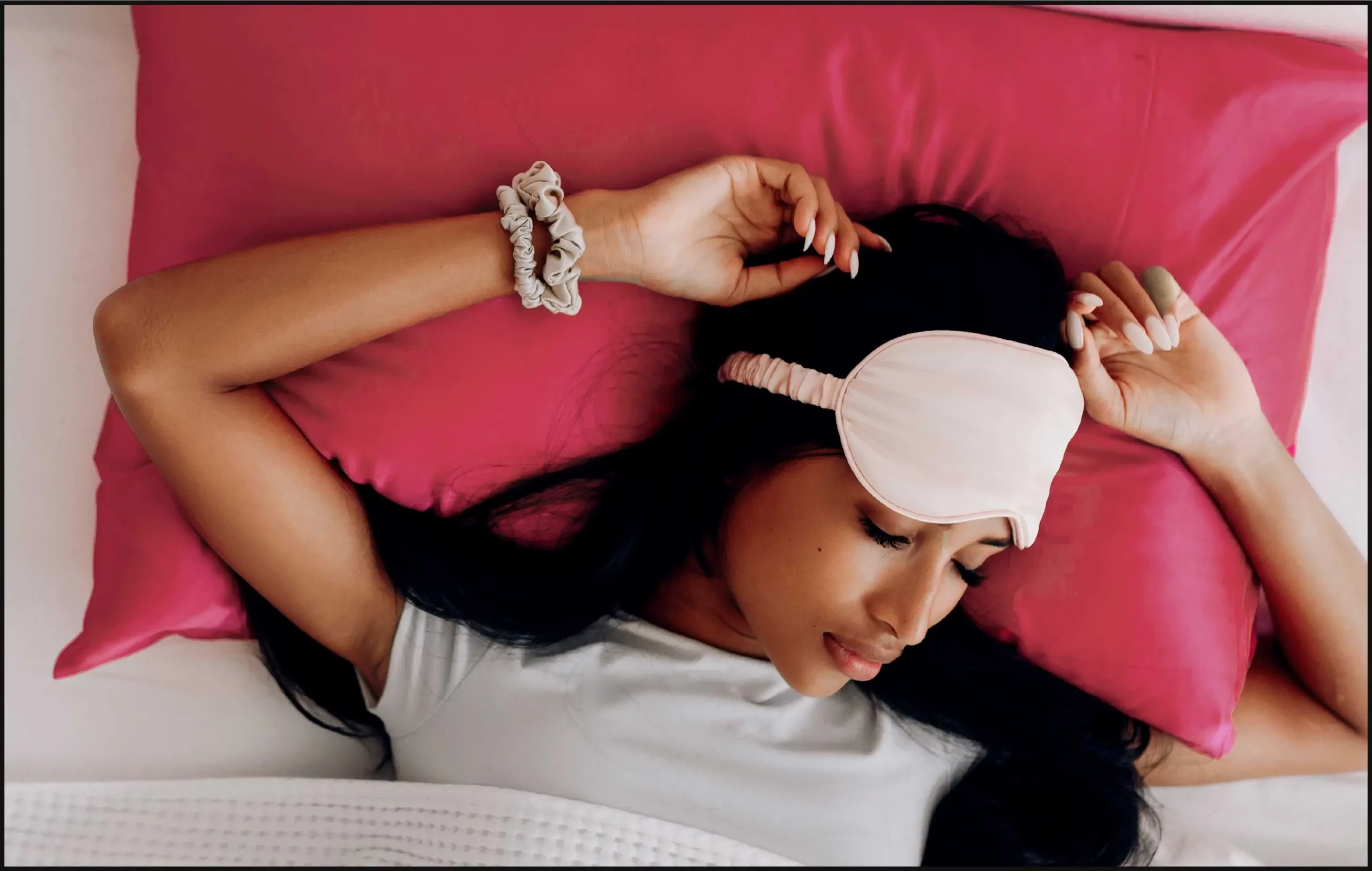
A good night’s sleep can have you feeling and looking your best — but the same typically doesn’t apply to our hair. If you constantly wake up to frizzy, tangled tresses, try snoozing with a silk pillowcase.
Silk is smoother than cotton or polyester, which means there’ll be less friction on your locks after a long night of tossing and turning. Less friction means less frizz, breaks, and tangles, resulting in silky smooth strands.
If you’re looking for even more hair protection through the night, donning a silk bonnet will also keep you from pulling or tugging on your hair while you sleep.
22. Consider your climate
Planning a vacation to Florida soon? Maybe a summer road trip up the East Coast? Going from a dry to a humid climate or vice versa can cause once-manageable hair to tangle and frizz. Give your mane a fighting chance against sudden climate changes by adding smoothing or moisturizing products to your routine before your next tropical vacation.
23. Try the dryer sheet hack
If you follow HairTok, there’s a good chance you’ve heard multiple users swear by the dryer sheet hack to combat frizz. If you think about it, it makes sense — dryer sheets are coated with a softening agent that helps neutralize static while clothes are in the dryer, so why wouldn’t it do the same for your hair?
For a quick frizz fix, some suggest lightly swiping a clean dryer sheet lengthwise down your hair to remove static and smooth flyaways. While this isn’t a long-term solution, it can leave your hair feeling silky — and smelling amazing — in a pinch!
24. Stop touching your hair
Contrary to popular belief, running your fingers through dry hair will not help tame your frizz. In fact, constantly touching your hair will likely only make it more unruly — especially if you’re rocking natural curls.
When you touch your hair and scalp, your fingers can actually strip away the natural oils you need to support soft, supple strands. While it’s easier said than done, try to refrain from touching your hair while it’s dry and styled.
25. Reverse serious damage with a keratin treatment
If hair masks, serums, and gels aren’t cutting it, it might be time to go to the pros for a professional keratin treatment. Keratin is a smoothing treatment that coats and seals hair cuticles with keratin protein, making even the most frizz-prone hair softer, shinier, and more manageable.
Results can last for as long as six months, so this treatment is an amazing option for those with low maintenance top of mind.
26. Add color and shine with a professional hair glaze
Even with new, gentle formulas available today, regularly dyeing your hair can result in dry, brittle strands, split ends, and breakage. The next time you book your salon appointment, try a hair glaze instead.
Unlike traditional color treatments, a glaze is a non-permanent color deposit that adds extra moisture, shine, and color to your hair while smoothing frizz and flyaways. However, because this is a gentler formula, results will only last one to two weeks. If you’re planning a big event or vacation, this treatment will have your hair looking sleek and shiny without any fuss.
27. Embrace your natural texture
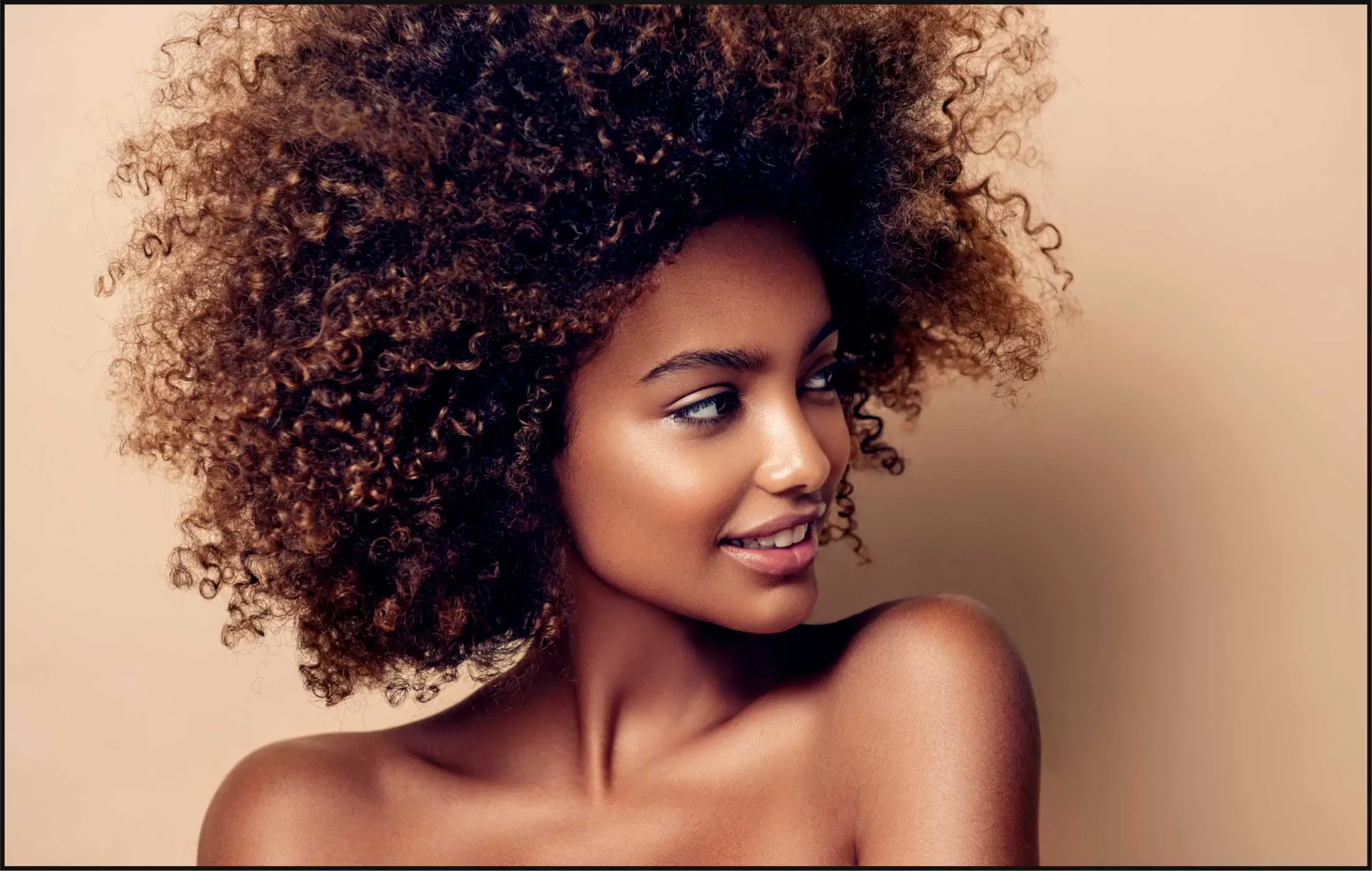
Let’s face it — sometimes frizz is unavoidable. If you’ve spent 40 minutes straightening your hair only to have it frizz in the rain, you know exactly what we’re talking about. Sometimes the only way to fight the fluff is to learn to work with it.
Battling your natural hair texture with heat tools, excessive products, and tight styles will only lead to more damage and frizz. The best way to achieve smooth, shiny locks is to learn how to style your natural hair. That might mean trying new products like gels or masks to enhance — not hide — your natural texture, or avoiding heat tools when you’ve been using them for years. It’ll take time to find what works best for your hair before you can start to repair it, but once your hair is healthy again, it’ll be much easier to maintain.
What causes frizzy hair?
When it comes down to it, there are three main causes of frizzy hair: the environment you’re in, your genetics, and your hair care routine. Here’s a breakdown of how each frizz-causing factor can affect your locks.
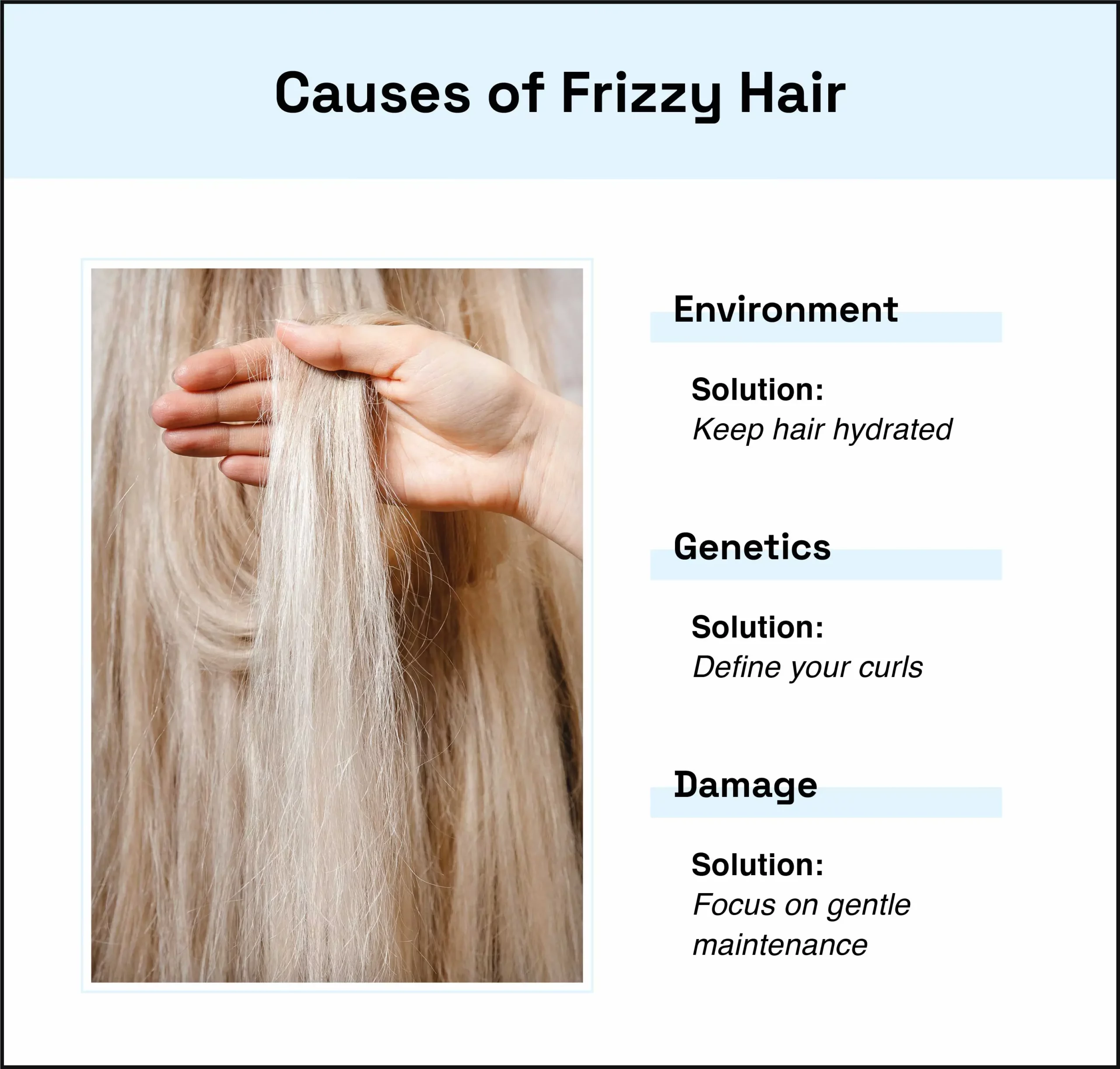
Environment
Hair fibers are porous and act like sponges when exposed to moisture in your environment, such as humidity or rain. Frizz occurs when the level of moisture in the air is greater than that of your hair, allowing the moisture in the environment to be absorbed into your hair fibers. When the hydrogen bonds in the air become fused with the proteins and water molecules in your hair, straight hair becomes wavy, wavy hair becomes curly, and curly hair becomes coily — but virtually any texture will inevitably frizz.
The solution? Keep your hair hydrated with moisturizing shampoo and conditioner, serums, masks, and leave-in conditioner.
Genetics
If you were born with wavy or curly hair, you’re much more prone to frizz than those with straight hair. The curlier your hair, the more difficult it is to keep your hair fibers sealed and aligned.
However, just because frizzy hair is in your genes doesn’t mean you need to live with it. In fact, this is a case where embracing your natural texture is the best way to stave off frizz. Ditch the straightener and look for products and styles that’ll define the hair you were born with.
Damage
If you shampoo every day, aggressively dry your hair with a terry cloth towel, blow-dry constantly, use the wrong brush for your hair type, and wonder why your hair is a frizzy mess, it might be time to reevaluate your hair care routine. Heat damage and unnecessary friction cause split ends and breakage — giving the tips of your hair a poodle-like appearance.
Give your hair a much-needed break by switching out harsh daily habits. Here are a few easy adjustments you can make:
| Instead of… | Try… |
|---|---|
| Drying your hair with a terry cloth towel | Using a microfiber towel or cotton T-shirt to squish out water |
| Washing your hair every day | Washing your hair two to three times per week, using dry shampoo as needed |
| Using a traditional blow-dryer | Opting for an ionic blow-dryer and heat-protecting spray |
| Only conditioning in the shower | Applying a leave-in conditioner and weekly deep-conditioning masks |
How to get rid of frizzy hair: FAQS
Still looking for a solution to silky, shiny hair? We answered some of the most frequently asked questions about how to get rid of frizzy hair to help you find what works best.
Want to avoid chemicals and products? Get rid of frizzy hair naturally by:
● Washing your hair two to three times a week with cold water
● Using a microfiber or cotton T-shirt to dry your hair
● Wearing your hair in natural styles that don’t require heat tools
● Avoiding tight styles like high ponytails and buns
● Sleeping with a silk pillowcase and/or hair bonnet
● Detangling your hair with a wide-tooth comb
The best way to get rid of frizz in less than five minutes is by applying a lightweight hair serum or oil to add shine and smooth flyaways.
If frizz concentrates toward your crown, you can spray a bit of hairspray onto your brush and lightly brush from roots to end to keep your hair in check all day.
While heat and friction can definitely cause frizz, frizz does not always mean damage. Even the healthiest hair is prone to poof in wet, humid weather. Naturally curly, coily, and wavy hair is also more susceptible to frizz.
Consult with your hairstylist for a personalized approach to fight the frizz
There are plenty of reasons your hair may be anything but smooth, and there are even more products and solutions promising to help soothe your frizz. If you’re feeling overwhelmed, find a hair care specialist with experience treating your unique hair type. They’ll be able to recommend the best products, treatments, and styles to take your hair from brittle and unruly to shiny and sleek.
